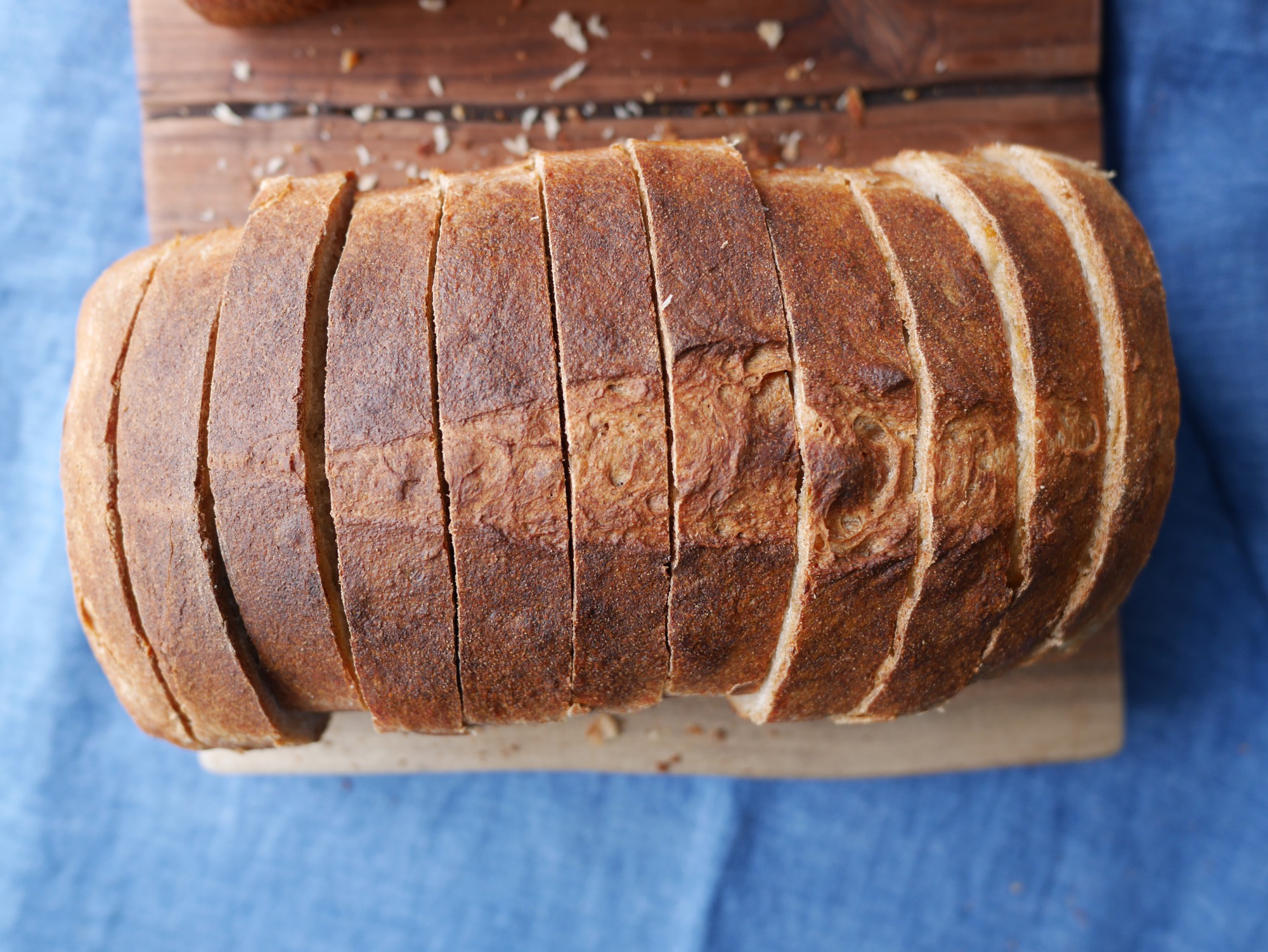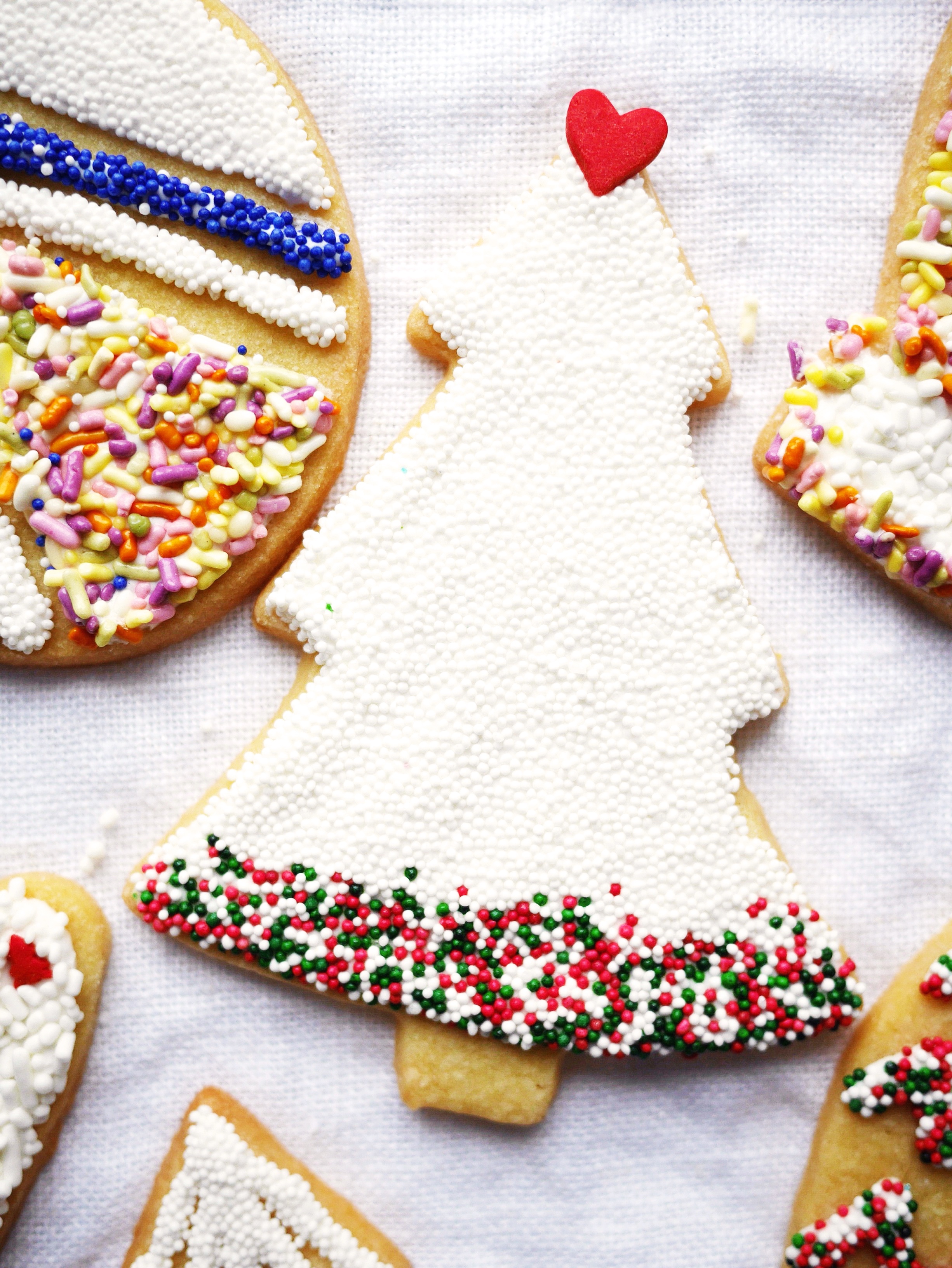I've always been a bit intimidated by yeast. Something about the fact that it's a living thing and how easy it is to kill with water that's too hot. The great part about Jim Lahey's no-knead bread method is that you mix the flour, yeast, salt, and water together and let the yeast do their thing. It's a laid back and easy way to make bread and I love it.
Serve this toasted with a schmear of homemade ricotta. I discovered this combination was so addictive this spring, while developing a teaching curriculum for 8 middle schoolers. I adapted this recipe from the original, which needs a covered cast-iron pot and makes a round boule-style loaf. This needs a bit of kneading to help it rise enough in the oven, but not so much it becomes an arm-strengthening production. This allows the dough to rise uncovered (which is different from the original recipe).
Use a digital scale to measure the ingredients, if you can. And, if you made some homemade ricotta, you can save the whey to use instead of the water in this recipe for a nuttier, toastier taste. Just let it cool down completely before using.
No-Knead Sandwich Bread Adapted from Jim Lahey’s No-Knead Bread
Makes 1 loaf
Ingredients: 400 grams (3 cups) bread flour (ideally half-white half-wheat), plus additional for the work surface 8 grams (1¼ teaspoons) kosher salt 1 gram active dry yeast (¼ teaspoon) 300 grams (1⅓ cups) cool water (55 to 65 degrees F) Canola oil, for greasing
Equipment: 8½-by-4½ -inch loaf pan
Whisk the flour, salt, and yeast in a large bowl. Stir in the water and knead with a rubber spatula until a ball forms. Make sure it is sticky to the touch. If it is not, stir in 1 to 2 tablespoons more water.
Cover the bowl tightly with plastic wrap and set in at room temperature (about 72 degrees F) for 18 to 24 hours until more than doubled in size.
One hour before baking, grease an 8½-by-4½ -inch loaf pan with oil. Dust a work surface with flour. Scrape the dough from the bowl onto the floured surface and knead about 10 times, until the dough is no longer sticky. Pat into a 9-inch square, then fold the left third of the dough over the center third. Fold the right side of the square over the folded left and center third. Invert the dough into the greased pan, seam-side down.
Cover the pan loosely with plastic wrap and let rise at room temperature for 1 hour, or until doubled in size.
Preheat the oven to 450 degrees F at least 30 minutes before baking. Remove the plastic wrap from the dough. Use a knife to make a slash down the center of the bread, then dust the loaf with flour. Bake for 30 to 35 minutes, until golden-brown and the loaf sounds hollow when you tap on it. (Or check with a thermometer to make sure the inside reads 160 degrees F.) Let cool before slicing.


















